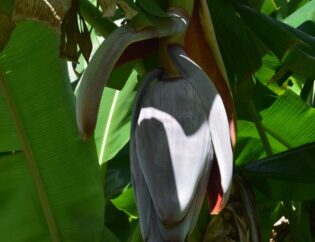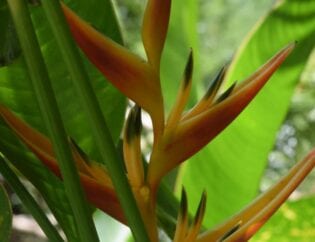
Managing watering schedules for a large garden, or landscape, especially one with many plants requiring different amounts of water can be very difficult to keep up with over time. There’s an added challenge in staying on track despite variable weather conditions that can rapidly deplete soil moisture or oversaturate your landscape leaving vegetables, flowers, trees, and shrubs over-watered and at risk. Installing a drip irrigation system can take the struggle out of maintaining a successful garden or landscape. Here is some information to help you choose the right drip irrigation system to meet all your plants’ needs.
What is a Drip Irrigation System?
Drip irrigation is a watering system designed to deliver a low-volume of water to a garden, landscape or yard, at low water pressure. “Drip” systems can be equipped to produce a drip, stream, or spray. This kind of system delivers water directly to your plant roots while preventing overwatering.
A drip irrigation system typically consists of hoses, additional tubing, valves, and emitter nozzles, and other parts (see below) that work together to supply the appropriate amount of water to each plant along the system, enabling gardeners to avoid either over- or under-watering.
Most drip irrigation components can be concealed under a mulch layer, leaving only the emitters uncovered, to help prevent clogging, and as they grow, plants often conceal the emitters and any other parts that are above ground.
Drip Irrigation System Components
It’s recommended that you obtain all your drip system components from one manufacturer, if possible, to help ensure compatibility of all the parts. Here are the essential parts of a drip irrigation system:
• Soaker Hoses — Soakers are garden hoses with tiny holes along the length, for emitting water.
• Flexible tubing — Durable ultraviolet (UV) resistant black or brown tubing that feeds water to emitters.
• Fittings — These are the connectors for your drip system components.
• Stakes — Stakes attach to tubing and serve as mounts for emitters, prevent clogging with dirt, insects, or landscape debris.
• Risers — Risers elevate emitters above plants or to the appropriate level.
• Plugs — Stop water emissions from holes with plugs, to allow the removal of emitters without tube replacement.
• Pressure regulators (reducers) ¬¬— A pressure regulator reduces the water pressure coming into the line from your home, which is usually too high for the drip line irrigation system.
• Pressure Compensation — Quality drip systems are designed to compensate for common water pressure fluctuations due to ground elevation, hose length, and other factors, to deliver consistent watering.
• Filters — Filters are installed at the hose faucet, to protect the irrigation system from dirt, sediment, or hard water buildup, any of which can obstruct and restrict water flow.
• Automatic Flush Valves —flush valves reduce clogging from dirt and landscape debris that enters through emitters when water is turned off.
• Check Valve — This valve allows water to shut off automatically when pressure in the main water system feeding the irrigation lines is reduced, which helps prevent back-flowing contaminated water from the drip system into the home’s interior water system.
• Programmable Valves — Automatic timers trigger the drip system to run for set intervals. Smart systems can trigger watering based on weather conditions.
• Emitters — These nozzles discharge water from the irrigation system onto plants or into soil. See details on emitters in the section below. Emitters designed for “turbulent flow” are designed to help minimize risk of clogging.
Types and Functions of Drip Irrigation Emitters
Emitters are rated for the maximum pounds per square inch (PSI) of water pressure they can utilize. (PSI). Use pressure-compensating emitters for a consistent flow rate, even during varying water pressure. Here are the types of drip irrigation emitters and their functions and uses:

Determine Your Irrigation System’s Flow Rate
The number of gallons-per-hour (GPM) that your system carries is its flow rate. The types of plants you are watering and the soil type determine the flow rate you need for a successful watering program. Use this simple 2-step method to determine the flow rate of your drip irrigation system:
- Record the total number of seconds it takes to fill a gallon container using your outdoor water faucet.
- Divide that total number of seconds it took to fill the container by 60 seconds, to calculate the total GPM.
How to Optimize Operation of Your Drip Irrigation System
Follow all the manufacturer’s instructions for installation and use of your drip irrigation system. Beyond that basic advice, here are some additional tips for keeping your system running as designed:
• Ensure correct tubing length and water pressure going to the target plants.
• Create separate irrigation zones to water for various plants’ specific watering needs.
• Before installing tubing, leave tubes in the sun to heat for several hours, to make them more pliable. That will help make connecting to fittings for emitters easier.
• Use the correct number and spacing of emitters.
• Ensure appropriate flow rates for drainage in your garden’s soil type.
• Flush drip lines routinely to clear any debris, especially if the water supply has lots of minerals.
• In Hawaii, we’re free from winterizing, but use manufacturer’s recommendations for winterizing your system in any gardens you may have in colder climates.
Pros and Cons of using Drip Irrigation Compared to Other Irrigation Systems
Drip and sprinkler systems each have their advantages and disadvantages. If you already have an underground sprinkler irrigation system, you can use a kit to convert your sprinkler system to drip irrigation instead. Or, you can just purchase some drip components, to customize a drip irrigation zone in your existing sprinkler system.
Here are some of the pros and cons to consider when deciding between the two types of irrigation systems:
Drip System Pros and Cons
PROS
• Reduces water use and costs, uses less water than sprinkler systems
• Can be customized for any garden configuration, raised beds, potted plants, etc.
• Reduces moisture loss by evaporation. See Hawaii evaporation rates at elevations
• Precise distribution of water, does not promote weed growth, erosion, or run-off
• Does not require trenching, water lines can lay on ground under mulch
• Avoids excessive moisture that fosters fungal growth
• Potential local government rebates and other financial incentives for installation of drip irrigation (Ask your local water company, government, or drip system manufacturer.)
CONS
• Some routine maintenance is required
• Rodents and insects can cause damage to tubing, which may lead to water leaks
• Emitters can become clogged by water high in iron content
Ground Sprinkler System Pros and Cons
PROS
• Highly efficient on coarse soils
• Pivot systems are programmable for specific times and spray angles
• Easier to maintain and operate
CONS
• Scalding may occur to foliage
• Higher water use
• Nozzles may clog easily due to poor water quality
Considerations in Choosing a Drip Irrigation System
To create the ideal watering system for your garden, consider these factors when selecting a drip irrigation system:
• Plant Types — A key benefit of drip irrigation systems is their great design versatility. A well designed drip system can water a great variety of plant types optimally.
• Soil Type — Generally, the many soil types fall into six general categories of types: sandy, clay, peaty, silty, loamy, and chalky. Each has its particular water drainage properties and nutrient contents. Identify your soil type, and select the best drip irrigation system for it.
• Flow Rate — To meet each plant’s water needs, choose the appropriate emitters. Remember that even plants with minimal water needs can become distressed in rapidly-draining and drying soil, and even plants that need lots of water can become overwatered in soil draining too slowly.
• Garden Size — For a larger garden that needs more tubing and emitters, two separate systems may work better than one, to run at different locations on your property.
Your New Drip Irrigation System
Drip irrigation systems are easy to install and simple to maintain. Investing in a good quality drip irrigation system allows you to set a timer and be confident that all your plants are automatically receiving the proper amount of water for their specific needs. A drip irrigation kit combines all or most components needed to create a system that is ideal for a vegetable garden, container plant, flower bed, shrubs, or trees.
Keep in mind that although a drip irrigation system uses less water than underground sprinklers, using any means of watering may be restricted in your area during some times of year, or during certain weather conditions. Be sure to check your local watering regulations prior to purchasing and installing an irrigation system of any kind.
Sources
https://www.usgs.gov/special-topic/water-science-school/science/irrigation-drip-or-microirrigation?qt-science_center_objects=0#qt-science_center_objects
https://www.bobvila.com/articles/best-drip-irrigation-system/
https://extension.missouri.edu/programs/irrigation/irrigation-system-pros-and-cons
https://www.usgs.gov/special-topic/water-science-school/science/irrigation-spray-or-sprinkler-irrigation?qt-science_center_objects=0#qt-science_center_objects
https://hbr.org/2011/06/innovating-on-the-cheap
http://www.extento.hawaii.edu/kbase/reports/dripirrigation.htm
https://www.epa.gov/sites/production/files/2018-05/documents/ws-outdoors-microirrigation-prosguide.pdf
https://www.nrcs.usda.gov/wps/portal/nrcs/detail/soils/survey/?cid=nrcs143_014055
https://dlnr.hawaii.gov/drought/current/county-drought-notices/









